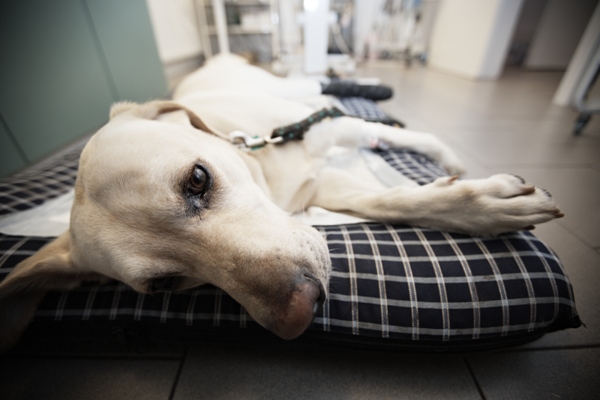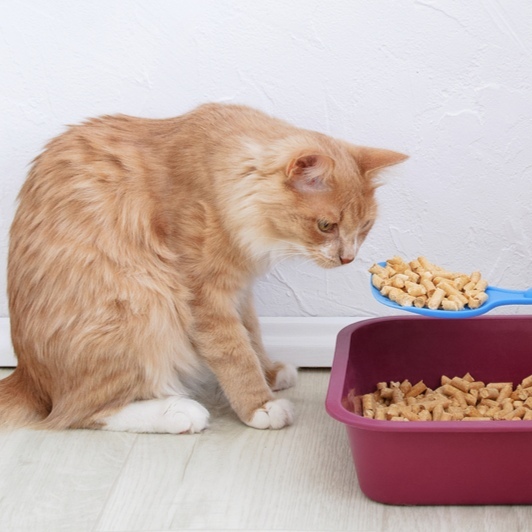Addison’s Disease in dogs and cats
 Addison’s disease (also called Hypoadrenocorticism or adrenal insufficiency) is a deficiency of cortisol, a glucocorticoid produced by the adrenal gland, or aldosterone, a mineralocorticoid produced by the adrenal gland. Both of these are hormones that are critical to the healthy functioning of the body.
Addison’s disease (also called Hypoadrenocorticism or adrenal insufficiency) is a deficiency of cortisol, a glucocorticoid produced by the adrenal gland, or aldosterone, a mineralocorticoid produced by the adrenal gland. Both of these are hormones that are critical to the healthy functioning of the body.
The condition is caused by either faulty adrenal glands or abnormal signals sent from the pituitary gland. It can occur in both dogs and cats.
Symptoms of Addison’s disease in dogs and cats
Addison’s disease has a variety of vague symptoms which can come and go intermittently.
- Vomiting: When infected with Addison’s disease, pets will vomit much more frequently than what is considered normal. Keep an eye on your pet and, if they are vomiting often, it could be a sign of the disease.
- Diarrhoea: Frequent loose stools will occur. The excrement will smell bad and there may be blood in the stool. Keep an eye on the colour and note the frequency with which your animal is passing waste.
- Weakness: If your pet isn’t showing its usual enthusiasm for food or it is showing intolerance for physical exercise, this is an indication that it may be seriously ill. Look out for the signs of physical weakness such as wobbly back legs, an inability to balance properly and general lethargy. They may also have difficulty climbing stairs.
- Weight Loss: You will notice that your pet will begin to lose weight quickly. Excessive diarrhoea and vomiting will cause the animal to lose condition and appetite will become severely reduced.
- Excessive urination & drinking: Affected pets may suffer polyuria and polydipsia, causing them to drink and urinate frequently.

Diagnosis of Addison’s disease in dogs and cats
Addison’s disease is difficult to diagnose because its symptoms are similar to those of many other diseases. Excessive drinking and urination could be symptoms of diabetes, while anorexia, vomiting and diarrhoea could indicate a gastrointestinal disease or parasitic infection. It is important to see a vet at the first sign of any abnormality to rule out any of these conditions. Furthermore, around 5% of pets may suffer other endocrine diseases at the same time as Addison’s disease, meaning they could have both Addison’s disease and Hypothyroidism and/or Diabetes.

Treatment of Addison’s disease in dogs and cats
Sudden onset Addison’s disease is a medical emergency, requiring IV fluids and short-acting cortisol. Gradual, chronic cases of Addison’s can be treated with daily glucocorticords, mineralocorticoids, or Percorten-V injections every 3-4 weeks.
Prevention…
Treating fungal and/or bacterial infections, managing diabetes and identifying signs of cancer are the best way to prevent the disease.

Interesting facts
- Addison’s disease can affect humans too, although it is rare. Approximately 1-4 in 100,000 people are sufferers.
- The disease is named after Dr. Thomas Addison, who discovered it in 1849.
- Cortisol is an important hormone for controlling stress, maintaining blood pressure & blood sugar, assisting the immune system and regulating metabolism.
- Aldosterone is important in controlling blood pressure and the water/salt balance in the body.
Bow Wow Meow Pet Insurance can help protect you and your pet should an unexpected trip to your vet occur.
- Find out more about our dog insurance options
- Find out more about our cat insurance options
- Get an instant online pet insurance quote
Bow Wow Meow is proud to have been awarded winner of Canstar’s ‘Most Satisfied Customers’ Award in the Pet Insurance category for both 2024 and 2025!
Bow Wow Meow is proud to have been chosen as Product Review’s Pet Insurance Award Winner every year from 2018 to 2025! This is based on 2,995 independent customer reviews (as at 21/01/2025), with an overall rating of 4.3*
Google Review rating = 4.5* (based on 968 reviews)
Trust Pilot rating = 4.6* (based on 531 reviews)
Bow Wow Meow is proud to have been chosen as Product Review’s Pet Insurance Award Winner every year from 2018 to 2025! This is based on 2,995 independent customer reviews (as at 21/01/2025), with an overall rating of 4.3*
Google Review rating = 4.5* (based on 968 reviews)
Trust Pilot rating = 4.6* (based on 531 reviews)
Bow Wow Meow has been chosen as a winner in the Finder Pet Insurance Awards 2024. Finder’s panel of experts analysed over 140 quotes to award our Ultimate Care Plan the winner of the “Pet Insurance – Value” category.







